How To Calculate Your Water Needs For Survival
I’m really trying to emphasize storing water big time because I don’t want my readers standing in line to get water from their local communities after a disaster. Please store water in a few different ways. If your local water lines are contaminated you may not be able to use your water heater tank for your hydrating needs. Just something to think about. You may remember me talking about the different timetables for survival. If not, I will tell you in case you’ve forgotten
If you want to know how long you can live without water, air, shelter, or food, I have you covered with this timetable below. Of course, there are always variables but you get the jest of what I’m trying to convey. Please remember when filling your containers where applicable to use a lead-free hose. Lead-Free Hose
Please remember to place your water containers off the concrete/cement floors with at least a two-inch clearance. I use two-by-fours. Explanation about concrete, water temperatures can change and therefore, moisture can form so we need space for air to circulate around the containers. Another reason is possibly chemicals from the concrete can leach into the containers.
Survival Timetable
- 3 minutes without air (I don’t recommend trying this)
- 3 hours without shelter (extreme heat or cold weather)
- 3 days without water (you’ll need water or you’ll perish)
- 3 weeks without food (I promise this would not be fun)
Water Storage Ideas
I thought today I would break it down for you on how to figure out how much to store and which containers. Everyone has a budget and we all have different sized homes or apartments. The American Red Cross recommends one gallon per person per day. I recommend four gallons per person per day. I get thirsty just thinking I could only have one gallon per day. We need it for hydrating, cooking, and personal hygiene.
Note: American Red Cross (page 7)
Plastic Bottles
I looked at a case I have in my house that has 24 bottles filled with 20 ounces of water. One case has 480 ounces which equals 3.75 gallons. Yes, it’s less than four gallons but you get the idea. So this case would be enough for one day for one person. If you want enough for 30 days you will need 30 cases for one person.
Pros: inexpensive, about $5.00 a case
Cons: only stores for 6-12 months, cannot refill the bottles
WaterBricks
WaterBricks hold 3.5 gallons (the larger ones). They come with a handle and stack on top of each other. If you use Water Preserver you can rotate the bottles every 5 years. You can get them anywhere from $20.00 each to $175.00 for ten containers on Amazon. Here again, if we use one of these for the allotted water per day you will need one WaterBrick per person per day. If you want to store enough for 30 days you will need 30 WaterBricks for one person. Each container, when filled with water, weighs about 27 pounds.
Pros: reusable, you can rotate them every 5 years if you use Water Preserver. Once purchased you have a lifetime water storage container. You can store these under a bed or stack them. I have 56 gallons of water in WaterBricks under a bed in my guest room. WaterBrick article by Linda
Cons: expensive
WaterBricks
Blue Can Water
I store some Blue Can Water cases behind this dresser in my bedroom. This is my favorite water because of its taste. It’s pure water. Each box has 24 cans of 12 ounces each. The total amount of water per case is 288 ounces which equals 2.25 gallons. I call this water storage, my set and forget water. I know it’s not my 4-gallons but I want to show you how much water is in each case. Let’s say you want one case for each person per day (I want a little more but hey), then you will need 30 cases for one person for 30 days.
Pros: stores from 33 to 150 degrees. They are stackable and easy to carry. No water preservation is needed. No rotation is needed at least in my lifetime (50 years). No filter or purifier is needed.
Cons: expensive
100-Gallon Bathtub Container
I will be honest here, this is not my favorite way to store water, but if you KNOW a hurricane is coming you can fill this Water Bob with 100 gallons of water and it sits in your bathtub. It does have a spigot, but you may want another spigot, I had a reader tell me they do not come with a good spigot. If you want to break this down, this Water Bob will hydrate one person for 30 days with just a little over three gallons per day. WaterBob from Amazon
Pros: cheap
Cons: not easily accessible. I would want to filter or purify this bathtub water, personally.
5-Gallon Tanks
I used to get water delivered to my house years ago until I switched to Reverse Osmosis about 13 years ago. Best decision I ever made. It cost less than $400.00 to have one installed and the guy comes once a year with new cartridges and cleans the lines for a total of $105.00 a year. BARGAIN!
Several grocery stores in town let you fill your own after your purchase of the container.
Here’s the deal, I still like those 5-gallon containers you can buy and store for your hot/cold water dispenser. They are heavy but they also hold 5-gallons. You could count one 5-gallon tank for two days worth of water for one person. Therefore fifteen 5-gallon tanks would be good for thirty days for one person.
Pros: good clean water, not expensive
Cons: hard to haul in your car
55-Gallon Water Barrels
This is the type of container I started my water storage years ago. I personally will only use this water for personal hygiene because I am not rotating it. I have four barrels on the side of my home covered with a UV protector bag. I live in the desert and these help keep my barrels from totally cracking from the heat. They have been out there for ten years now and they are still going strong. No leaks, no algae. I open all four once a year and check them. They are good to go. Please remember you need a Bung with these and a siphon pump.
One 55-gallon barrel would suffice for one person for a month. Yes, you would have less than 2 gallons a day per person.
Pros: very inexpensive
Cons: hard to access the water
250-Gallon Tanks
I had to save my money for one of these babies. That’s all I wanted for Christmas last year. Mark and I were laughing when the company delivered it. It didn’t look that big at the store. Anyway, I filled it with the Nano Silver container it came with and fresh water, so I only have to rotate this water every 5 years.
Ideally, this one tank would take care of two people for 30 days. Thirty days times four gallons equals 240 gallons.
Pros: holds a lot of water, it has two spigots so you can fill it and drain it. One time purchase
Cons: very expensive
I hope today helps you just a little more in getting prepared for the unexpected. Let me know your favorite water storage tips. May God bless you and your family.
Copyright photos:
Water glasses: AdobeStock_28539972 by Aaron Amat

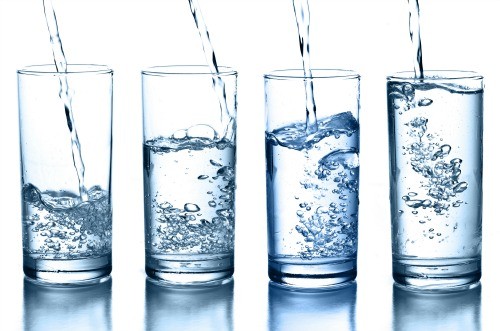

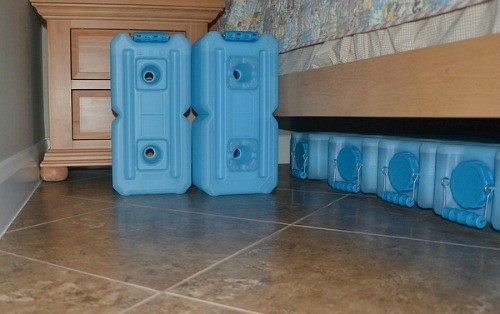
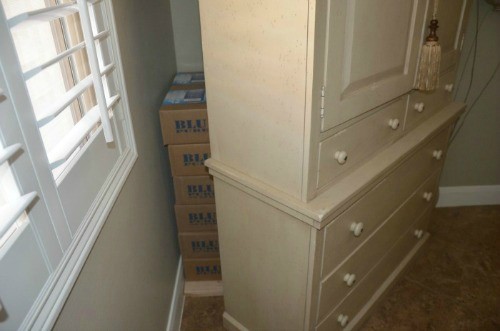
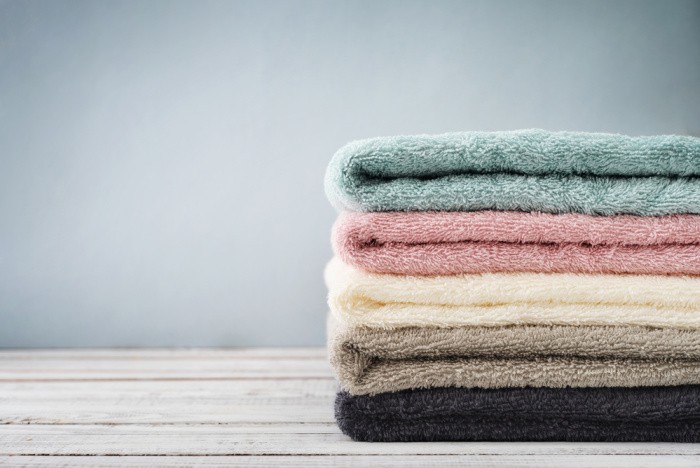
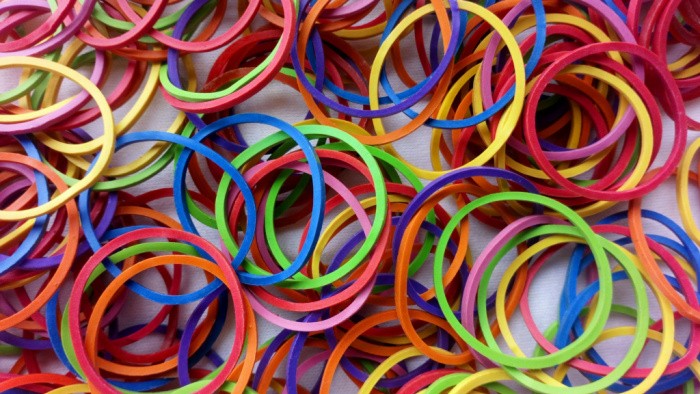
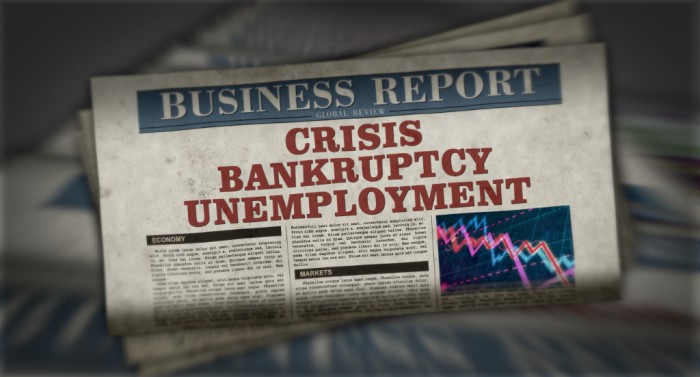
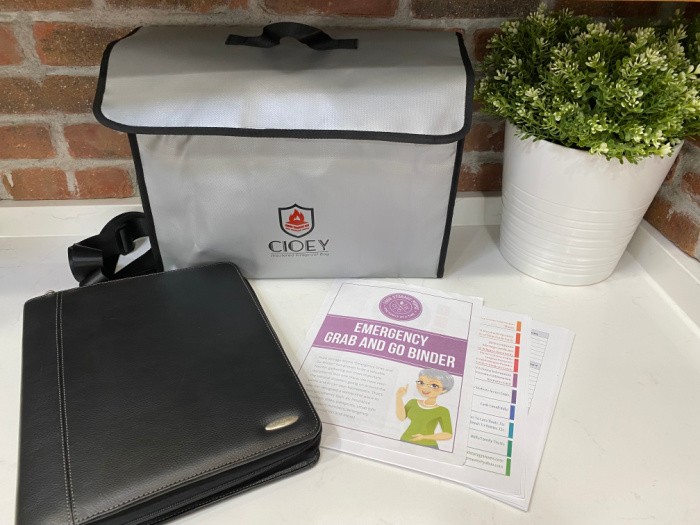
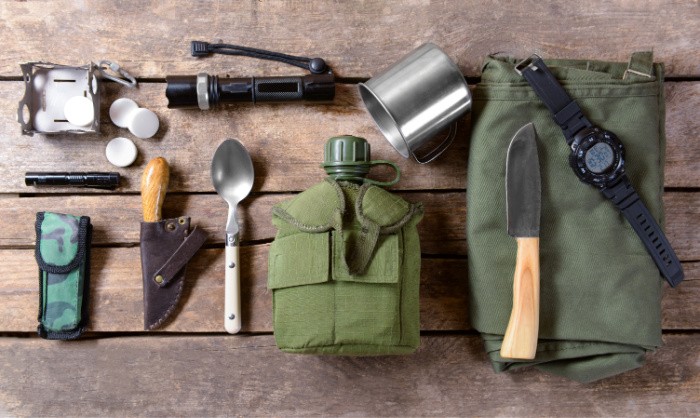





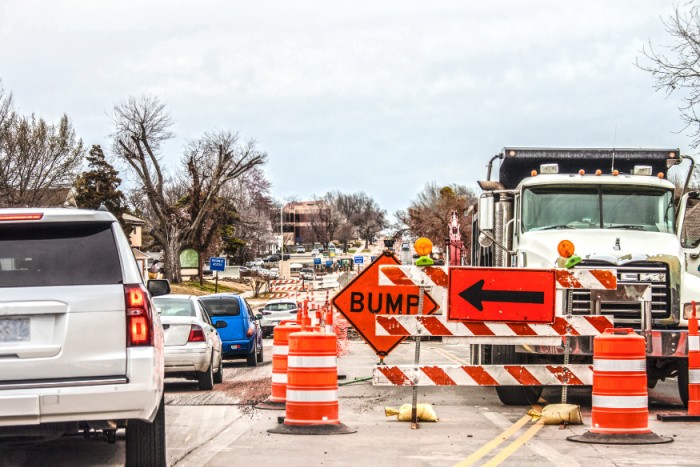
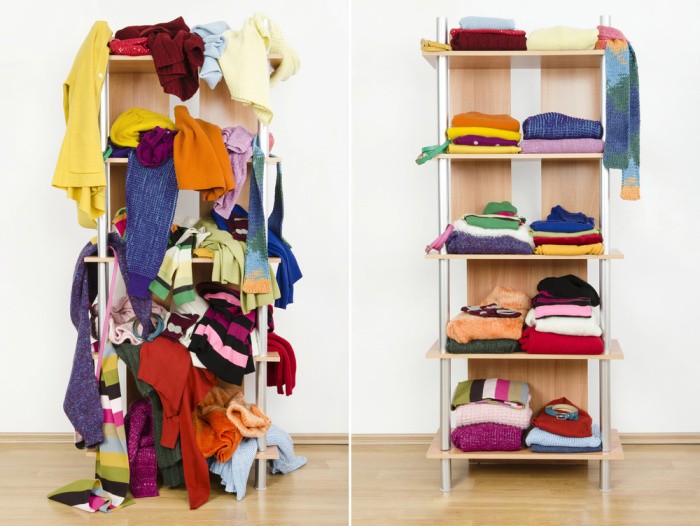
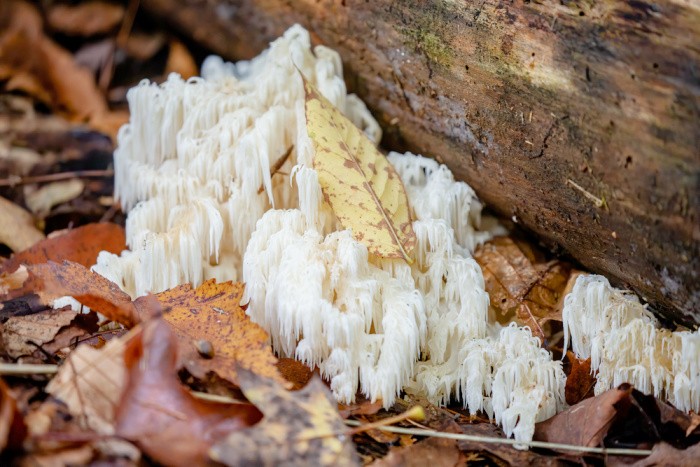
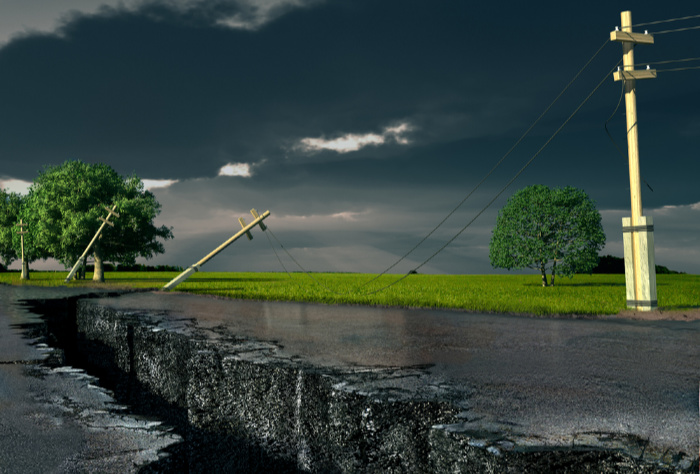


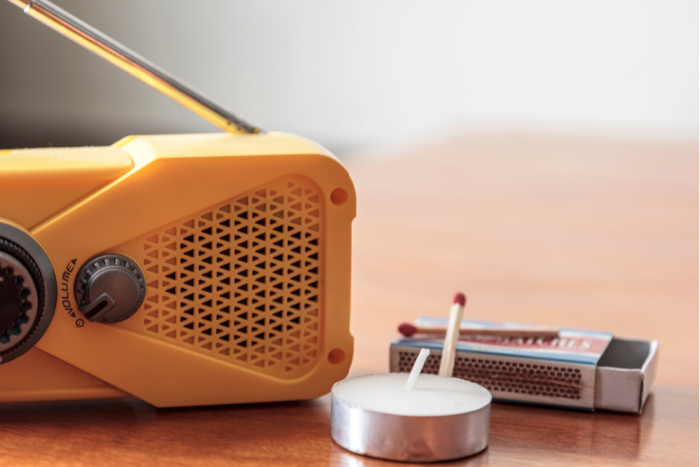
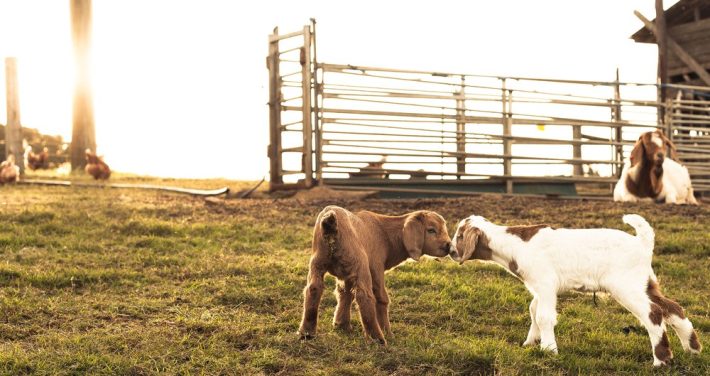


Linda,
One needs to keep in mind that the 1-5 gallons per day for water usage is for various things and not all of it has to be pristine & potable. 1-3 liters per day for drinking in winter can keep one hydrated and perhaps another 2 for cooking. Hygiene and toilet flushing needs can be met with water that is not of the quality required for drinking. With the kids all gone and only the two of us, we keep 3-4 5-gallon buckets of water around, with loose fitting lids, primarily for flushing. Bottled water can be handy and fill the gaps; but, having some kind of filtration system available can easily provide enough drinking water from many sources. A few 50 gallon food grade barrels full of tap water can be treated once in a while with common household bleach, and running this water through a filter will make it potable, no matter it’s condition. This can be a commercial filtration system like a Berkey, or a DIY system made from purchased filters and food grade buckets, one should also reconnoiter your neighborhood looking for potential water sources before you actually need them in an emergency. In my case we have a good well & a creek; but, ponds, hot tubs, and swimiing pools can be likely places to draw from. You also need to have containers on hand to get that other water and bring it home. Once again, 5-gallon or 2.5-gallon buckets can be used to grab water and haul it home, keeping in mind that pairs of buckets partially full can be easier to carry than one full bucket, since you share the load with both arms and help maintain your balance with equal weight on each side. A full 5-gallon bucket weighs about 40 pounds and a full 50 gallon barrel weighs about 400 pounds, so plan accordingly, since moving after filling will most likely be a task.
Hi Ohio Prepper, this is why we need to store water a few different ways. Great comment, Linda
Linda, We are switching from 5 gallon containers, to 3 gallon containers. They are easier to change on the water cooler. I can easily do it.
Hi Janet, great comment! three-gallon size containers are more manageable for sure!!! Linda
Having a rain catchment system is wonderful. We don’t need to use our bottled water for bathing,laundry or flushing the toilet. I realize this tank will not always be full. But I didn’t have to worry about water needs a while back when out community well went down. We try to keep between 300-500 gallons bottled water in addition to the water tank which holds 550 gallons. We have reverse osmosis filter system as well in case we ever need to drink from the tank. We keep 2 year supply of filters for that also. We have personal water filters as well for each family member. There are so many ways to be prepared with water storage. You can build a filter with charcoal,sand and rocks. Knowledge is power my friends. I try to buy a couple cases or 5 gallon bottles a couple times a month.
Hi Judy, great comment! I want a rain barrel catchment system for sure. I’m impressed with all the water you have stored! You rock! I gave my family water filters a few years ago for Christmas. I love your idea of storing two years worth of filters. I have a Berkey but I like the 2-year idea! Thanks for the awesome tip! Linda
Could you explain the reasoning behind not setting your water containers on concrete? I have seen that directive before when reading about setting up a rain catchment system but never really understood why.
We keep water in our tornado shelter as well. Although we don’t live in “tornado alley” we have had a couple come very close to where we live (it’s not big but sufficient-certainly not big enough to call a root cellar). Since it is concrete, a couple of the 3 gallon containers are on the floor, so need to know does the concrete make the water unsafe to drink?
Hi Sandra, here’s the reasoning behind not storing our water containers directly on concrete. Water temperatures can change and therefore, moisture can form so we need space for air to circulate around the containers. Another reason is possibly chemicals from the concrete can leach into the containers. I would get some wood and lift the containers up. When in doubt, toss, clean and refill. Thanks for reminding me, I’m going to add this statement to my post. Thank you, Linda
Dear Linda, we just can’t afford these containers right now yet I know I need more water storage. Some bottled spring water comes in 1 gallon square screw-top bottles with handles ($1.39) or 2.5 gallon dispensers ($3.09). What if I bought a few of these each week–do you think they would hold up without leaking?
Hi Roxanne, no worries, everyone has a budget. I get it, trust me. Water is water, keep it off the ground and find a place to store it in case the bottles leak. I doubt they will last for years but it’s okay because you can rotate, replace and use as needed. I don’t know the quality of the plastic containers you are talking about. Any water is better than NO water. It may be cheaper to purchase a 55-gallon container at Walmart. They run about $38.00, you just need to borrow someone’s RV hose that is lead-free to fill it. Just an option, I don’t know how many people are in your family or space you have to store water. The 2.5 gallons would be easy to handle for sure. You can always filter it down the road or purify it. Keep storing water, good job. Linda
Roxanne, Linda, & all,
Another option that is dual purpose would be inexpensive milk jugs filled with water and kept in the freezer. We can purchase the clean, empty gallon containers at our local Kroger and can even fill them with water from their R/O dispenser for $0.25 each. I don’t recall the price of the container; but, if you have filtration available, you could reuse plastic milk jugs after a thorough washing. By storing them in your freezer (in our case a chest freezer) they will keep indefinitely as ice, with the added benefit of keeping the freezer cold if you have a power outage, or keeping an upright freezer colder, when you open the door and all of the cold air falls out. This prevents that problem. If all you have is the freezer compartment of your refrigerator, you can do this with any small container you can fit into the empty spaces. In any case, only fill the container about 2/3 to ¾ full, since water expands when it freezes. In a pinch, you simply pull out the containers and thaw them for potable water.
Hi Ohio Prepper, good reminder. Thanks so much, Linda
Hello Linda, Good advice on water storage. We’re facing our first really bad hurricane heading to the east coast for this year hurricane Florence. I think it will pass us here in Florida, we are still going to experience power outages, rain, wind hopefully I have enough of our supplies for this event as I’ve been a prepper for a long time and have lived long enough to know to be ready for the least expected. Water is very important to have on hand. Me and my husband made a berkley water filter system several years back for just this purpose, you just can’t be to prepared. I feel for our families in the Carolinas, and Virginia areas hope they bunker down and are somewaht prepared. Love your advice on everything Linda.
Hi Debbie, great comment. I love hearing from you. I called a friend today that has a daughter evacuating Myrtle Beach. She and her baby are leaving the area and heading to Utah. I’m praying for all the families involved. They are closing streets and not letting people back in right now. I have a Berkey as well, good choice for filtering lots of water. I hope you stay safe my friend. This storm looks like a BIG one. Linda
I’m not going to explain what “we” do except to say we have no rain barrels or water catchment system at my house, so we buy bottled water and fill containers, but here is something to consider. Last year when Irma was coming to Florida, my father filled an old container with water to flush the toilets and suggested to my brother and myself we do the same. To him an obvious, cheap and simple solution.
It occurred to me it would be a lot simpler to use portable toilets such as a Lug-A-Loo (One can make at home as well) or one of those little chemical toilets that flush and not have the problem of trying to bail out water from a trash can and then top it over to empty it. I figure if I am going to save water (And it’s not a lot) it should be for drinking and washing as health and hygiene are a priority.
I like those water bricks, but if one looks you can find nice containers for about $5-$7 that hold a few gallons. I have a few 5 gallon bottles (water dispenser type) that I refill inexpensively from a machine at one local grocery store. I agree that hauling, filling or storing smaller containers is better – much less fatiguing for anybody and they can sit on the counter, often with the spigot over the sink. Anything with a spigot and large opening for filling is fine. Maybe we should have a siphon pump or a funnel to assist in filling and extracting water. Work smarter not harder as they say 🙂
Hi Frank, great comment as always! I totally agree with the smaller containers. Whatever we can do to store water is critical for our survival. Linda